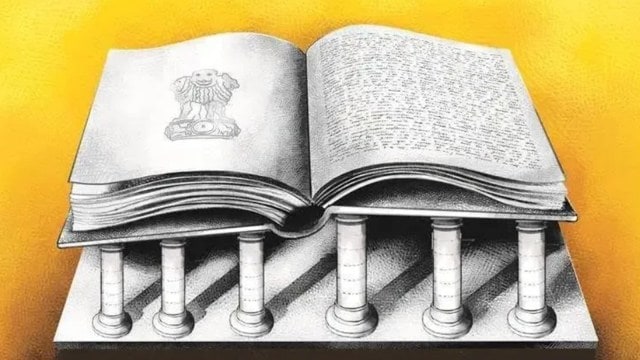
Since 2015, November 26 has been celebrated as Constitution Day to commemorate the day the Constituent Assembly adopted the Constitution of India in 1949 before it came into force on January 26, 1950.
Using numbers, here is a look at how the Constitution has changed over the years and the democracy it envisions in action. The Constitution continues to be the North Star of Indian democracy, guiding it as well as evolving according to its needs.
The Draft Constitution
315 Articles & 8 Schedules | What was in the Draft Constitution
7,635 | Amendments to the Draft Constitution
395 Articles and 8 Schedules | The original Constitution, which was the longest written constitution at the time at 90,000 words
448 Articles & 12 Schedules | What is in the Constitution now
The Constituent Assembly
Using the Government of India Act, 1935 as its base and borrowing from governments around the world, the Constituent Assembly was the body that drafted the Constitution over a span of 11 sessions and 166 sitting days spread across 2 years and 11 months.
Membership of Constituent Assembly
299 | Total members
229 | Elected members from 12 provinces
70 | Nominated members from princely states
By gender
15 | Women members
187 | Men members
By religion
148 | Hindus
23 | Muslims
11 | Christians
6 | Sikhs
3 | Parsis
1 | Buddhist
By political affiliation
164 | Congress
13 | All India Muslim League
8 | Independents
3 | Akali Dal
1 each | All India Anglo-Indian Association, All India Trade Union Congress, CPI, Hindu Mahasabha, Jana Sangha, Janata Party
How much has the Constitution changed?
In total, the Constitution has been amended 106 times.
Parliament and the people
As the population grew so did Parliament, whose seats were increased periodically through delimitation exercises. Despite this though, each Lok Sabha MP has been representing increasingly populous constituencies. In 2019, though, the Lok Sabha strength was dropped to 543 with the abolition of the nominated seats for Anglo Indian.
Over the years, Parliament has not only spent fewer days and hours working, but it has also passed fewer Bills and relied more on Ordinances.